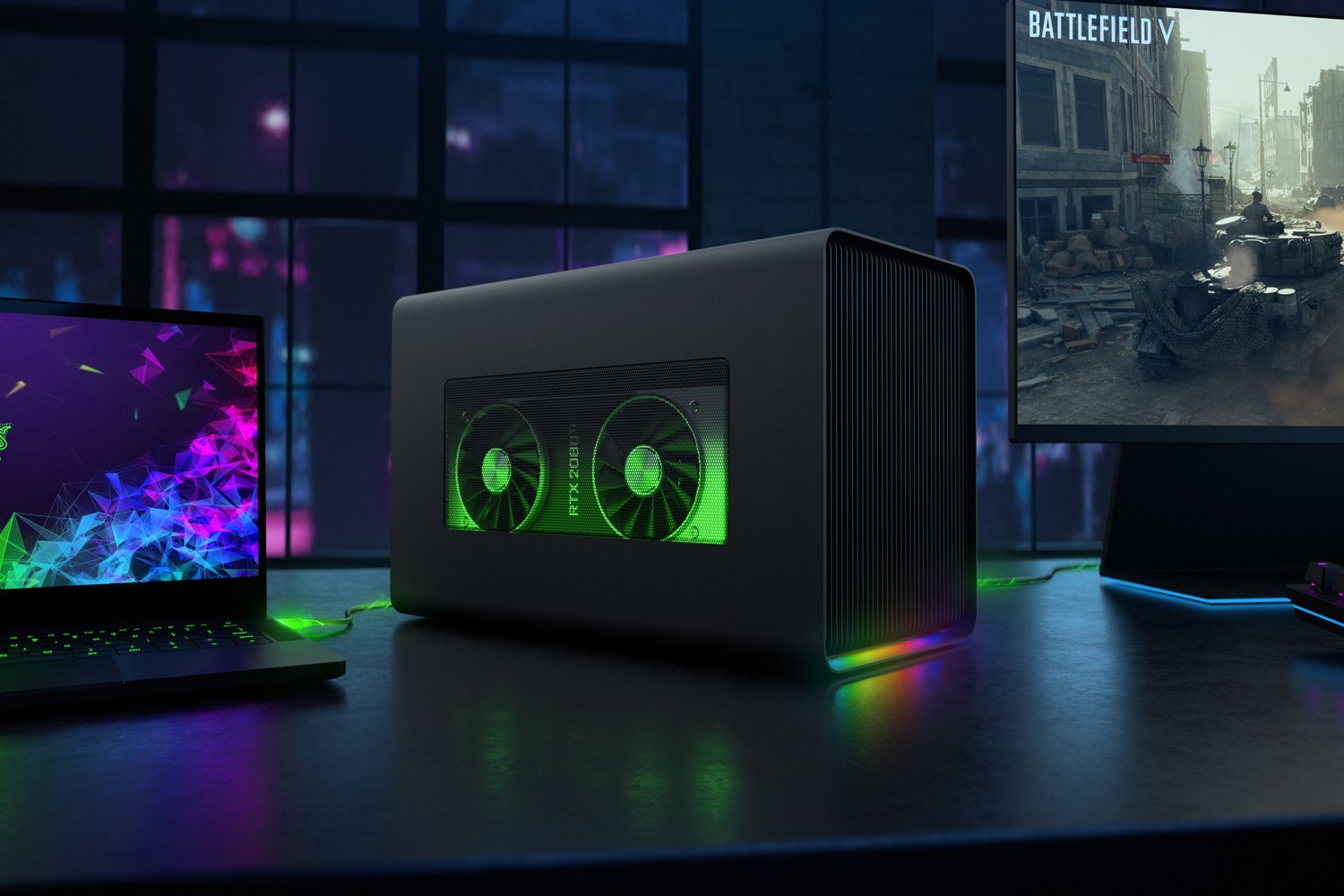

- #External graphics card install
- #External graphics card drivers
- #External graphics card update
- #External graphics card driver
- #External graphics card windows 10
Opening the case can be a daunting task if you’ve never done it but don’t fret, it’s not that intricate.įirst, you need to check that the power cables are properly plugged into the GPU. Opening Up The Case Removing PC case panels is usually easy.

Even if it is up to date, getting your BIOS reflashed may fix the problem. This is a tricky operation, so it’s best to follow the instructions from your motherboard’s manufacturer carefully. If you can’t seem to find an option to enable the GPU, refer to the motherboard’s manual.īefore we resort to opening your case, it’s good to check if your BIOS is up to date. The solution to this BIOS problem will differ from one motherboard to another. Keep in mind, different motherboard manufacturers have different BIOS. For every PC problem, there’s a solution. If your GPU is not detected at all and BIOS is showing its PCIe slot as empty, you have a bigger issue on your hands. If you’re lucky, BIOS will detect your discrete GPU, and you can simply enable it by changing its status from disabled. If your monitor doesn’t detect the GPU and only shows a black screen, you can use the integrated GPU to access BIOS. We will refer to UEFI as BIOS to avoid any unnecessary confusion.īIOS is in charge of your hardware, and it should be the first logical step in determining whether your GPU is disconnected. However, due to how BIOS was ingrained into our minds, it’s still widely used, although it now refers to UEFI rather than BIOS.
#External graphics card windows 10
BIOS/UEFI Issue And Fix Accessing the BIOS/UEFI settings is easy in Windows 10
#External graphics card update
You can also reinstall the update and see if you get a positive result or need to roll back the update again.
#External graphics card install
By checking related forums and communities, the only solution is to roll back the update and not install it until you are sure this problem no longer persists. This issue can also occur after a Windows update. This software then assumes responsibility for updating drivers. However, as GPU technology improves, manufacturers are beginning to prefer the method of having GPU management software installed automatically when a new card is inserted.
#External graphics card driver
Make sure you follow the right guide for driver uninstallation/installation. The driver installation process for AMD is different from NVIDIA GPUs. If that happens, you should carefully examine your GPU model and download the correct driver after removing the mistakenly installed one. In many cases, the user makes a mistake by downloading the wrong driver. It might be slightly unfair to claim that these errors are purely the fault of the manufacturer.

This could be a faulty driver or the new drivers’ incompatibility with another component inside the PC the options are too numerous to list.
#External graphics card drivers
Sometimes the ‘Graphics card not detected’ error will occur upon the installation of new drivers if something goes wrong. In that case, you’ll need to check the BIOS/UEFI, but we’ll get to that later. Unfortunately, it’s also possible that the Device Manager won’t even recognize your discrete GPU and will instead only show the properties of the integrated one. The text will show “Enable device” if the GPU is disabled You can also choose ‘Enable device’ by clicking on your GPU to fix the problem. This way, you can troubleshoot the issue “from the inside.” Enabling The Graphics CardsĪt that point, your first step should be to go to Device Manager, find your GPU, and check if it’s disabled. You can simply switch your monitor to that output (which you can find on your motherboard’s backplate, next to every other device input such as USB or PS/2). Sometimes, it doesn’t come back online and leaves you staring at a black screen.įortunately, most modern CPUs (excluding Ryzen) come with an integrated graphics card. If you’re playing a particularly graphically intensive game, your GPU could overheat and temporarily shut down. It can also happen for seemingly random reasons, but the truth is that there’s an explanation for everything that happens on your PC, and this is no exception. Admittedly, this shouldn’t happen very often, but it illustrates the point. This problem can occur for several reasons, but it’s very annoying when Windows automatically switches to the integrated GPU without you noticing it until you try to play a game. GPU Not Detected In Windows It would be a shame if your PC build looked like this but was unable to detect your GPU


 0 kommentar(er)
0 kommentar(er)
